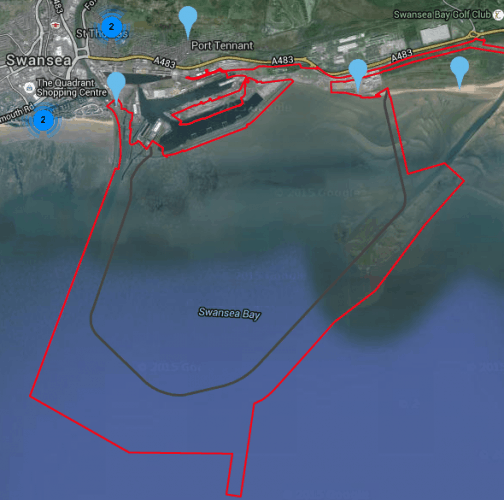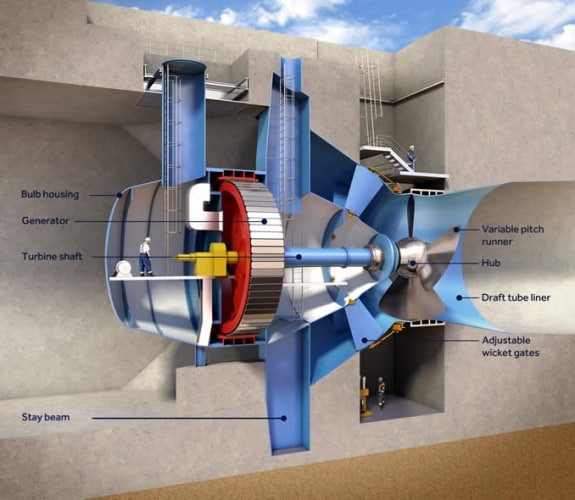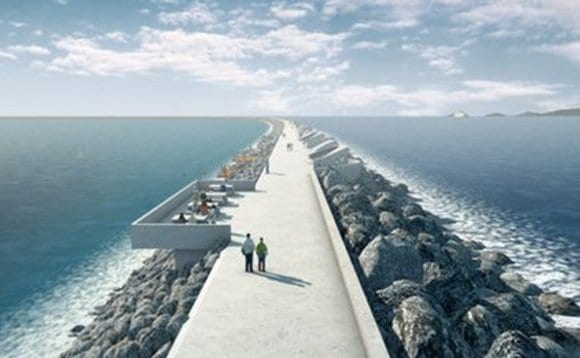Earlier today it was announced that Swansea Bay’s tidal lagoon project will be delayed for a year while negotiations between the UK government and Tidal Lagoon Power (TLP) continue. Despite receiving backing from the Department of Energy and Climate Change (DECC) in June, construction on the £1bn scheme is being put back 12 months to spring 2017.

While the cost of construction is certainly not to be sneezed at, it’s the cost of the electricity produced that appears to be the major sticking point. At £168 per megawatt hour, this is over 50 per cent higher than the nuclear power that will be generated by Hinkley C. On first glance this looks extortionate, but we need to remember that Swansea is being built as a proof of concept. If successful it could be used as a template from which to establish a series of bigger, more economically efficient, lagoon projects that could help power the national grid for the next century.
It’s no secret that we need a serious jump in energy from renewables if carbon targets are to be met. Solar and wind have led the way so far, but compared to tidal, the technology is relatively mature, with incremental improvements rather than giant leaps the order of the day. Furthermore, the power generation they deliver is unreliable, dependent on the vagaries of the British weather. Tidal, on the other hand, is as regular as clockwork (albeit a clock with shifting rhythms), and we have yet to scratch the surface of the technology’s potential.
The UK’s geography gives it some of the best tidal resources in the world. According to Renewable UK, there is approximately 10MW of wave and tidal stream devices being tested in UK waters - more than the rest of the world combined. The government should be doing everything in its power to support this nascent sector, including paying a premium for the electricity that the Swansea project will produce. Support is being sought for the first 35 years of the project, but with a life expectancy of 120 years, the government needs to think strategically and recognise the potential long-term benefits.
Speaking last week at the GE Power Conversion Electrifying Innovation event in Berlin, Tidal Lagoon Power CEO Mark Shorrock outlined the challenges the UK’s energy infrastructure faces over the coming years: “We’re losing eight nuclear reactors, and we’re going to lose nine coal-fired power stations. So we’re going to lose 21,000 MW of installed capacity – that’s one quarter of our installed capacity.”
This capacity needs to be replaced. Not only that, there needs to be steps taken towards generating base load energy from renewables. Tidal and hydro are two of the only renewable sources that can deliver base load power to the grid. If the government is going to cut subsidies to solar and wind, at the very least it needs to invest in other technologies that can provide energy security in the future.

“Once you’ve built this amenity…you’ve got a very, very certain power station,” Shorrock told the Berlin audience last week. “We know exactly how much the water is going to rise and the water is going to fall because of the dance between the planet earth and its satellite, the moon…you put this infrastructure in, and it goes and goes and goes.”
The 16 turbines that will harness the tidal power in Swansea are 7.5m in diameter, and 76m in length. Built by General Electric and Andritz Hydro, their combined output will be 320MW of electrical power. The technology is designed to last, with the aforementioned plant life expectancy of 120 years, and no major refurbishments anticipated for the first 50 years of operation.
As well as generation, GE is also involved in the transmission of power to the shore, providing large induction generators as well as variable speed drives (VSD). According to Tidal Lagoon, the VSDs provide greater efficiencies across the broad head range, as well as reducing the impact on fish compared to conventional fixed speed turbines. Understandably, the environmental impact of such a massive construction project needs to be properly assessed, and this is another factor contributing to the Swansea delay. As well as concerns over fish, issues around silting and sand dredging also need to be addressed before a marine license is granted.

For the most part, the project appears to have strong backing from the local community. As well as the obvious benefits of electricity and jobs, Tidal Lagoon Power is keen to position the plant as a public amenity, with the breakwall providing 9.5km of running and cycling track. Open water swimming, rowing and sailing are planned for the lagoon itself, and plans for a lagoon triathlon are already afoot.
“It’s not just about the economic impact,” said Shorrock, “it’s about the social amenity that you create with a lagoon. It’s about a sense of doing something with what’s there, that’s around you, that’s natural, that you can harness.”
What the government needs to remember is that the UK’s tidal potential is by no means limited to Swansea Bay. Using Swansea as proof of concept, the plan is to scale up, first to nearby Cardiff and Newport, then to West Cumbria, Colwyn Bay and Bridgwater Bay. The Cardiff project would see a longer breakwall constructed, with 10 times the volume of water enclosed. It would deliver between 1,800MW and 2,800MW installed capacity and an annual output of 4 TWh and 6 TWh - enough to power every home in Wales. Newport’s capacity would be similar. While some doubts about Swansea are inevitable, the sooner the project gets under way, the sooner we’ll find out just how big tidal power can be.




April 1886: the Brunkebergs tunnel
First ever example of a ground source heat pump?